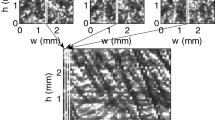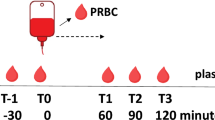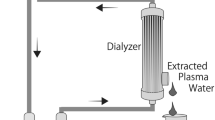Abstract
BLOOD viscosity may be raised in many diseases. This rise may compromise the perfusion and nutrition of organs throughout the body1–3; therefore there is great interest in any agent capable of reducing blood viscosity. Dextran-40 has been thought to be unique in performing this function3–7, but since its introduction as a plasma expander it has been the object of controversy because of conflicting reports about both its actual effect on viscosity and its mode of action2,3,7–14. Solutions of this type of dextran, with an average molecular weight of 40,000 (also known as low molecular weight dextran8, low viscosity dextran4,5 and ‘Rheomacrodex’6), were said to reduce blood viscosity by inhibiting or reversing the formation of erythrocyte (RBC) aggregates1–7 the presence of which is thought to contribute to the elevated viscosity levels found in pathological states1,2. The evaluation of dextran-40 is complicated, however, by the multiplicity of its effects, and particularly by its ability to expand the volume of plasma and reduce the haematocrit, alterations which in themselves lower blood viscosity1,2,3,4,6–8. Indeed, many investigators have concluded that all the beneficial effects of dextran-40 can be ascribed to blood dilution8,10–14, and evidence has appeared showing that this agent, like dextrans of higher molecular weight, will actually increase blood viscosity if the haematocrit is not permitted to fall3,10,12,15. Nevertheless, some workers still feel that infusions of dextran-40 are of special value in the treatment of hyperviscous states, and that the beneficial effects of this agent are mediated, at least in part, through the dissolution of RBC aggregates7.
This is a preview of subscription content, access via your institution
Access options
Subscribe to this journal
Receive 51 print issues and online access
$199.00 per year
only $3.90 per issue
Buy this article
- Purchase on Springer Link
- Instant access to full article PDF
Prices may be subject to local taxes which are calculated during checkout
Similar content being viewed by others
References
Dintenfass, L., Arch. Intern. Med., 118, 427 (1966).
Wells, jun., R. E., New Engl. J. Med., 270, 832; 270, 839 (1964).
Evaluation of Low Molecular Weight Dextran in Shock: Pharmacology and Pertinent Rheology (edit. by Eiseman, B., and Bosomworth, P.), 6 and 25 (Division of Medical Sciences, National Research Council, Washington, DC, 1963).
Bergenty, S.-E., Gelin, L.-E., Rudenstam, C.-M., and Zederfeldt, B., Acta Chir. Scand., 122, 343 (1961).
Gelin, L.-E., and Thoren, O. K. A., Acta Chir. Scand., 122, 303 (1961).
Gelin, L.-E., and Ingelman, B., Acta Chir. Scand., 122, 294 (1961).
Gelin, L.-E., in Fifth Princeton Conf. on Cerebral Vascular Diseases (edit. by Millikan, C. H., Siekert, R. G., and Whisnant, J. P.), 167 (Grune and Stratton, NY, 1966).
Collins, G. M., and Ludbrook, J., Amer. Heart J., 72, 741 (1966).
Evarts, C. M., Med. Clinics N.A., 51, 1285 (1967).
Meiselman, H. J., Merrill, E. W., Salzman, E. W., Gilliland, E. R., and Pelletier, G. A., J. Appl. Physiol., 22, 480 (1967).
Wells, R. E., Biorheology, 4, 88 (1967).
Putnam, T. C., Kevy, S. V., and Replogle, R. L., Surg. Gynecol. Obstet., 124, 547 (1967).
Replogle, R. L., Kundler, H., and Gross, R. E., J. Thor. Cardiovasc. Surg., 50, 658 (1965).
Bollinger, A., Lüthy, E., and Jenny, E., Klin. Wschr., 45, 939 (1967).
Gregersen, M. I., Usami, S., Peric, B., Chang, C., Sinclair, D., and Chien, S., Biorheology, 1, 247 (1963).
Rosenblum, W. I., and Asofsky, R. M., J. Lab. Clin. Med., 71, 201 (1968).
Rosenblum, W. I., and Asofsky, R. M., Arch. Neurol., 18, 151 (1968).
McIntire, K. R., Asofsky, R. M., Potter, M., and Kuff, E. L., Science, 150, 361 (1965).
Rosenblum, W. I., and Asofsky, R. M., Nature, 216, 1327 (1967).
Author information
Authors and Affiliations
Rights and permissions
About this article
Cite this article
ROSENBLUM, W. Effects of Dextran-40 on Blood Viscosity in Experimental Macroglobulinaemia. Nature 218, 591–593 (1968). https://doi.org/10.1038/218591a0
Received:
Revised:
Published:
Issue Date:
DOI: https://doi.org/10.1038/218591a0
This article is cited by
Comments
By submitting a comment you agree to abide by our Terms and Community Guidelines. If you find something abusive or that does not comply with our terms or guidelines please flag it as inappropriate.



